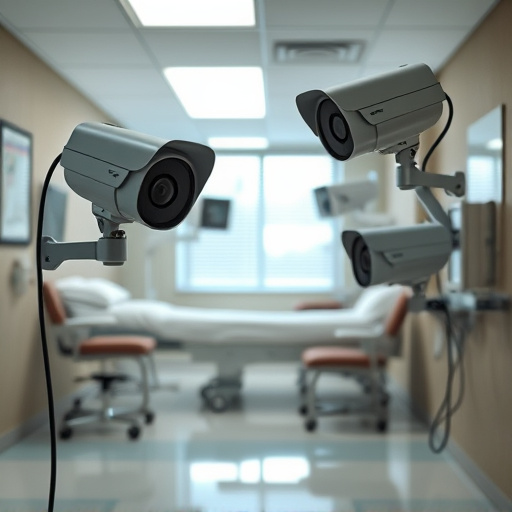Installing cameras in nursing homes has become a crucial, multi-faceted tool in today's digital age, offering enhanced care and security. These systems provide real-time monitoring, improve emergency response times, facilitate remote family connection, and enable virtual healthcare consultations. With various types of camera systems available, including fixed and mobile options with advanced features, nursing homes can choose solutions tailored to their specific needs. Surveillance cameras significantly benefit elderly care by allowing swift responses, strategic monitoring, detailed documentation, and informed decision-making. However, successful implementation requires robust policies balancing privacy protection – such as data encryption and secure storage – with transparency to build trust among residents, families, and staff.
In today’s digital era, implementing surveillance systems in nursing homes has become crucial for enhancing elderly care. “Cameras for Nursing Homes” explores the growing need for these technological tools and their multifaceted benefits. We delve into the various types of cameras available, from standard CCTV to advanced AI-powered models, each with unique features catering to specific care requirements. The article also discusses the ethical considerations surrounding privacy and highlights how responsible camera implementation can improve quality of life for residents.
Understanding the Need for Cameras in Nursing Homes
In today’s digital era, implementing cameras in nursing homes has become an essential aspect of care management and resident safety. The primary goal is to create a secure environment while fostering open communication between staff, residents, and their families. Cameras for nursing homes offer a range of benefits that contribute to better overall care. They enable staff to monitor residents’ well-being, especially those with dementia or mobility issues, ensuring they are safe and engaged.
With cameras, caregivers can quickly respond to emergencies, track resident movements, and provide evidence for any incidents or changes in behavior. This technology also allows families to stay connected and keep an eye on their loved ones, alleviating concerns and offering peace of mind. Moreover, these devices facilitate remote consultations, enabling healthcare professionals to assess residents without physical presence, which is particularly valuable during the current global health crisis.
Types of Cameras Available and Their Features
Nursing homes today are embracing technology in various forms, and cameras for nursing homes have emerged as a valuable tool to enhance care and security. When it comes to choosing the right camera system, several types are available in the market, each with unique features catering to specific needs.
Fixed cameras offer a reliable and straightforward solution, providing consistent surveillance without the need for movement. These cameras are ideal for monitoring common areas, corridors, and reception desks. On the other hand, wireless mobile cameras bring flexibility, allowing staff to move them throughout the facility for various purposes, including event coverage or specific incident investigations. Advanced features like night vision, motion detection, and two-way audio communication further enhance their functionality, ensuring round-the-clock monitoring and improved response times in emergencies.
Benefits of Surveillance in Elderly Care Environments
Surveillance systems, incorporating cameras for nursing homes, offer numerous advantages in elderly care environments. These technologies enhance safety and security by providing real-time monitoring of residents’ activities, ensuring prompt response to any incidents or emergencies. With cameras strategically placed, caregivers can keep a close eye on patients’ well-being without constantly being present, allowing them to attend to other duties.
Moreover, cameras for nursing homes contribute to improved care quality and accountability. They facilitate better documentation of patient interactions, treatments, and overall care delivery. This visual record enables healthcare providers to track progress, identify patterns, and make informed decisions regarding individual care plans. By promoting transparency and continuity, surveillance systems foster a safer and more supportive living environment for the elderly.
Ethical Considerations and Privacy Concerns for Camera Implementation
The implementation of cameras in nursing homes brings about a complex web of ethical considerations and privacy concerns that must be carefully navigated. While the use of technology can enhance safety, security, and overall care for residents, it also raises important questions about individual autonomy and the protection of sensitive personal information. Balancing these factors is crucial to ensure that any camera system respects the dignity and privacy rights of both residents and staff.
Nursing home administrators must develop clear policies outlining the purpose, scope, and limitations of surveillance cameras. This includes specifying who has access to the footage, under what circumstances it can be viewed, and for how long it is stored. Transparency in these practices is essential to foster trust among residents and their families. Additionally, privacy protections should include encryption of data, secure storage, and strict protocols for handling and sharing any recorded images or videos.
